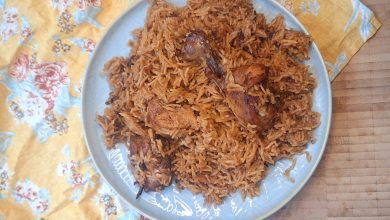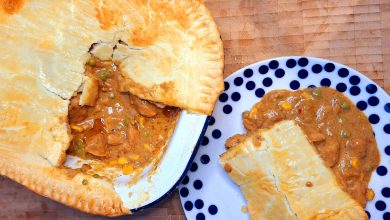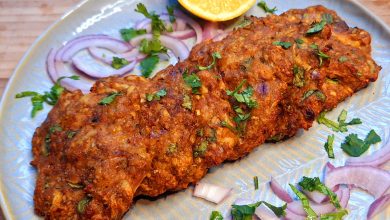Chicken Biryani, a celebratory rice
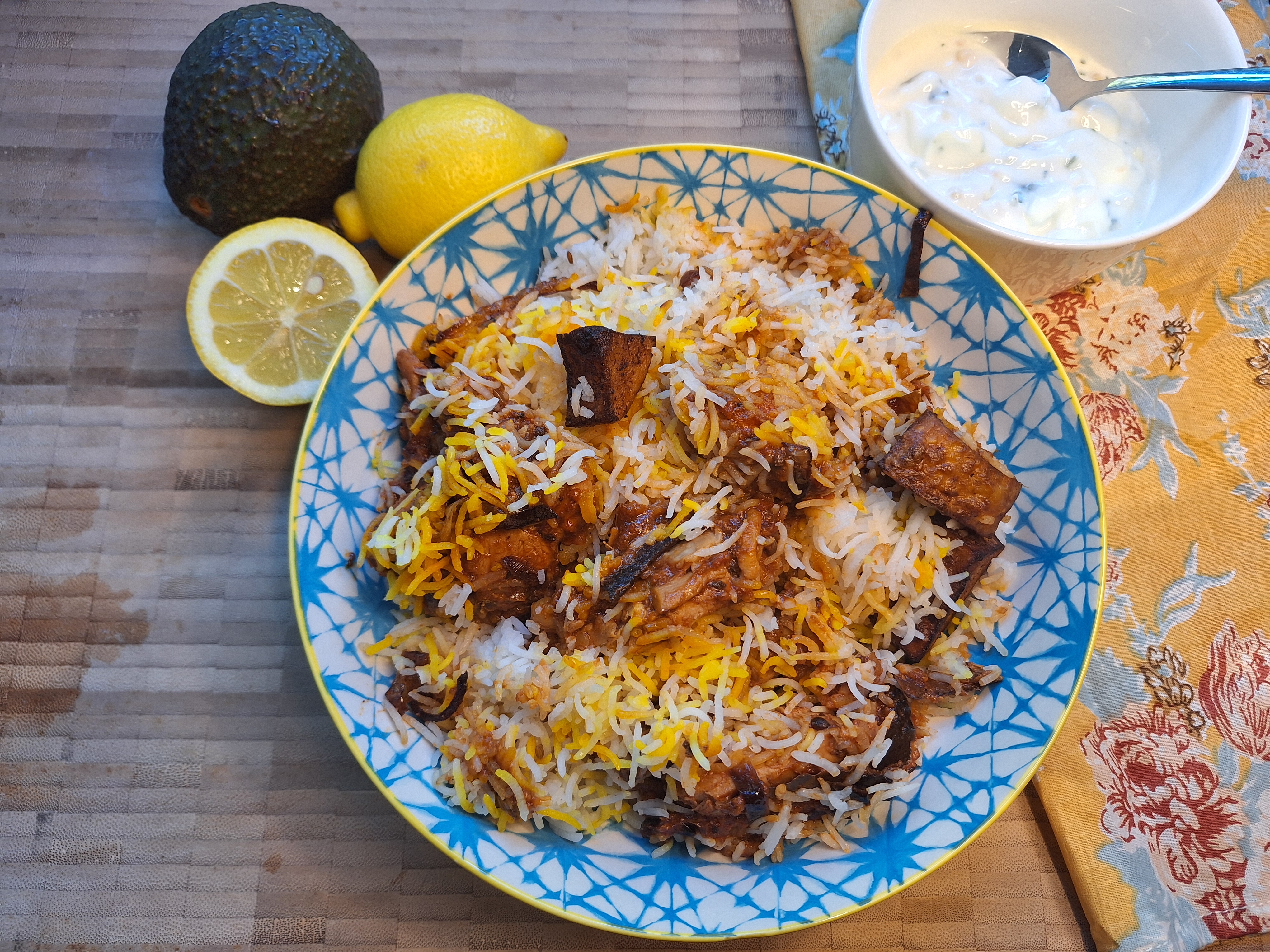
Growing up, my mum would always make biryani when we had family over. When we had family over, it was always a mini celebration, therefore filled with laughter. I just love a chicken biryani, because it is packed full of flavour and the fried onions just sing in this dish beautifully. They amplify the flavours and add a slight crunch.
History of biryani
This is another dish that has origins from the Mughal era like Nihari and Chicken ka Salaan. They key to these dishes is the slow cooking. For biryani, the method of cooking by “dum pukht” means the pot with the biriyani is sealed tightly to trap steam in the pot. The steam is what allows the flavours to come together and amplify magnificently. Biriyani is known for as a rich and flavourful rice due to this cooking method. The rice is usually garnished with fried onions, this adds a lovely crunch and contrast to the tender chicken and soft basmati rice. Of course as these dishes evolved over the years across the South Asian subcontinent, regional variations emerged. My Lahori brother in law likes to add boiled eggs to his biryani which adds a lovely twist.
Tips for my biryani
The secret ingredient for my Pakistani chicken biryani is the addition of the Worcester sauce, definitely do not skip this ingredient! The Worcester sauce undeniably gives the masala that additional tangy flavour along with the tamarind sauce. The use of whole spices is also essential, don’t be tempted to use grinded spices as you will not get the same depth of flavour as with whole spices.
In addition, I do prefer to cook with meat on the bone. For biryani I like to use a whole chicken cut into pieces, however you can also use chicken breast; just reduce cooking time at step 6.
The “dum pukht” (steam cooking) for me happens in the oven, I always like to do “dum” for rice dishes in the oven. This is because it frees up the hob for cooking other bits and pieces. I use yellow food colouring for the rice. However, you can use any food colouring you prefer, or a mix of colours, but I just love yellow. The yellow colour as a result makes the dish look celebratory and inviting. You can also choose any yoghurt based condiment with rice dishes, however I always serve this dish with a boondi raita (yoghurt), it needs nothing else.
Shortcuts
However, if you don’t want to go to the effort of frying the onions, you can buy pre fried onions in most supermarkets. This will as a result save quite a lot of the preparation and cooking time. You will need around 1kg of the pre fried onions as substitute. However, the taste is always better with freshly fried onions.
You can in addition prepare the biryani masala in advance, it freezes very well (up to three months). The onions and potatoes can also be fried the day before and stored in an airtight container, this helps to speed up the actual cooking of the dish on the day your guests are due to arrive.
Healthier alternative
If you are wanting to make this dish healthier, you can avoid deep frying the onions altogether and potatoes and pop them in the air fryer. The biryani still turns out really well. However, when I am entertaining, I always go full pelt and fry everything.
Biryani is a labour of love, and definitely is one of the longer Pakistani dishes to cook, but it absolutely wows and is worth the effort. If certainly is a very luxurious dish to eat and everyone will enjoy and appreciate the effort.
I would serve this biryani with mango lassi and tuna patties, go all out and have a feast!
See my video on Instagram or TikTok to see how to make this dish!
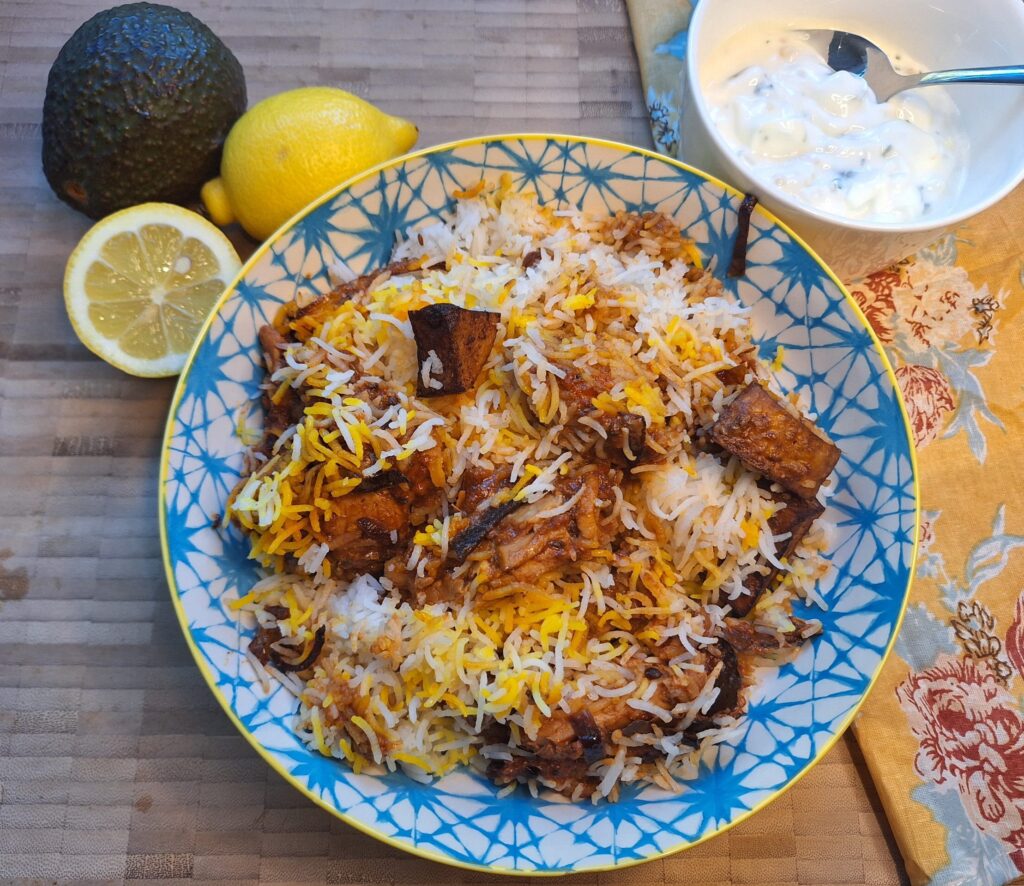
Ingredients for Pakistani Chicken Biryani
Feeds 6-8
Time Prep 15 minutes, Cooking time,1 hour and a 15 minutes (dum (steaming) 45 minutes)
Marinade for chicken biryani
- 1 whole chicken (1kg approximately), skinned, cut into pieces
- 9 tablespoons (300 grams) of natural yoghurt
- 1 tablespoon of finely chopped garlic
- 1 tablespoon of finely chopped ginger
- 1/2 teaspoon of cumin seeds
- 1/2 teaspoon coriander seeds
- 1 teaspoon salt
- 1 cinnamon bark
- 1 black cardamom pod
Masala for chicken biryani
- 2 tablespoons ghee or vegetable oil
- 1/2 teaspoon of black peppercorns
- 1 1/2 teaspoons of cumin seeds
- 2 bay leaves
- 2 black cardamom
- 1 cinnamon bark (1 inch long)
- 2 teaspoons of coriander seeds
- 6 cloves
- 7 cardamom pods
- 1 teaspoons salt
- 1/4 teaspoon chilli powder (to taste)
- 1 tin of chopped tomatoes
- 2 tablespoons on tomato puree
- 2 green finger chillies, finely chopped ( I add the tinned tomatoes, puree and green chillies in food processor to blend)
- 1 litre of vegetable oil
- juice of 1/2 a lemon
- 2 small potatoes, peeled and cut into quarters or small bitesize chunks
- 5 onions, finely sliced
- 100ml tamarind sauce ( I like East End Tamarind Sauce)
- 2 tablespoons of Worcester sauce
Rice for chicken biryani
- 1 teaspoons of cumin seeds
- 1 1/2 teaspoons salt (to taste)
- 3 mugs of basmati rice (800 grams approximately, I like using Tilda Pure Basmati rice)
- Water
- Yellow food colouring
Method
- Marinate the chicken with all the ingredients and leave in the fridge for at least 2 hours, ideally overnight.
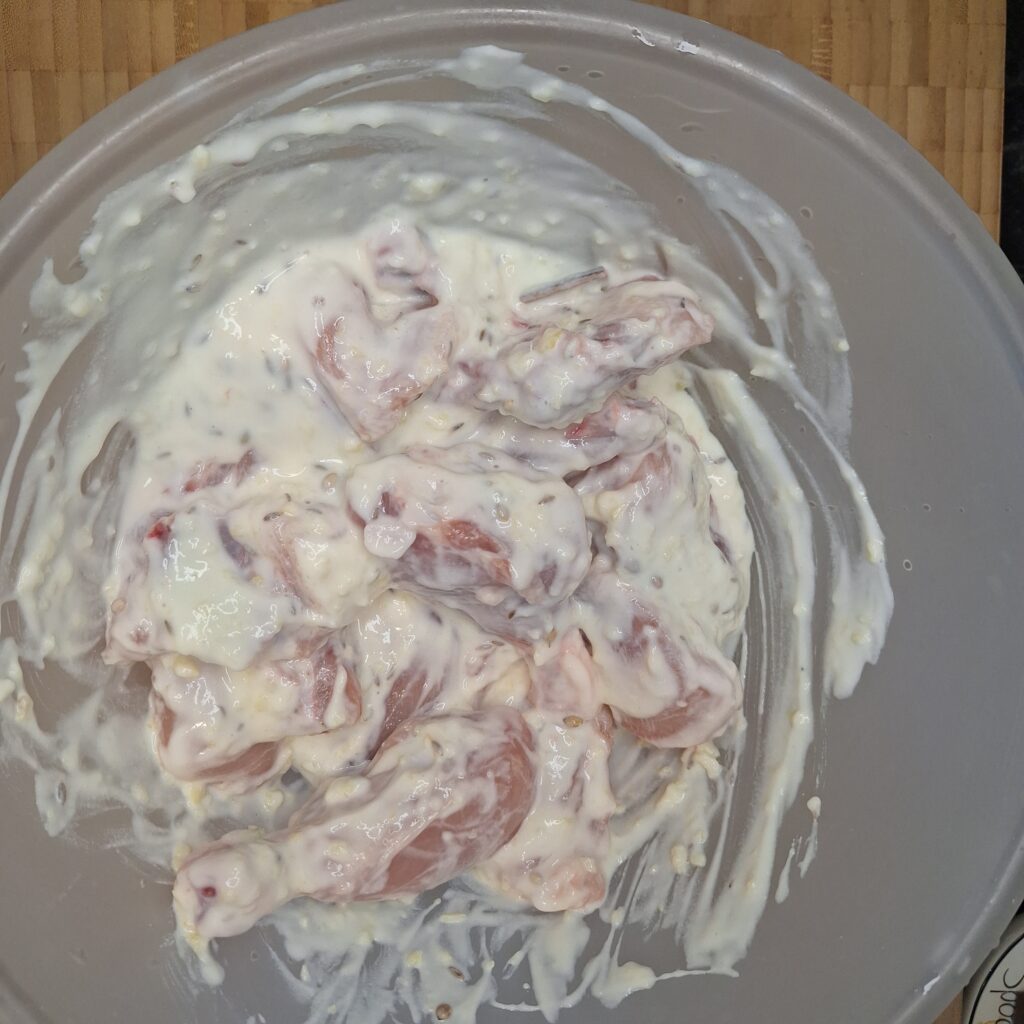
2. Wash the rice and leave to soak in cold water (ideally for a minimum of two hours). Turn the oven on, and put on 50-60C heat.
3. Heat the vegetable oil in a wok, once it is very hot, add the onions and potatoes and cook until golden brown. (Make sure the potatoes are properly cooked through, you do not want raw potatoes in the biryani.) Leave them to drain off on a plate covered with kitchen paper.
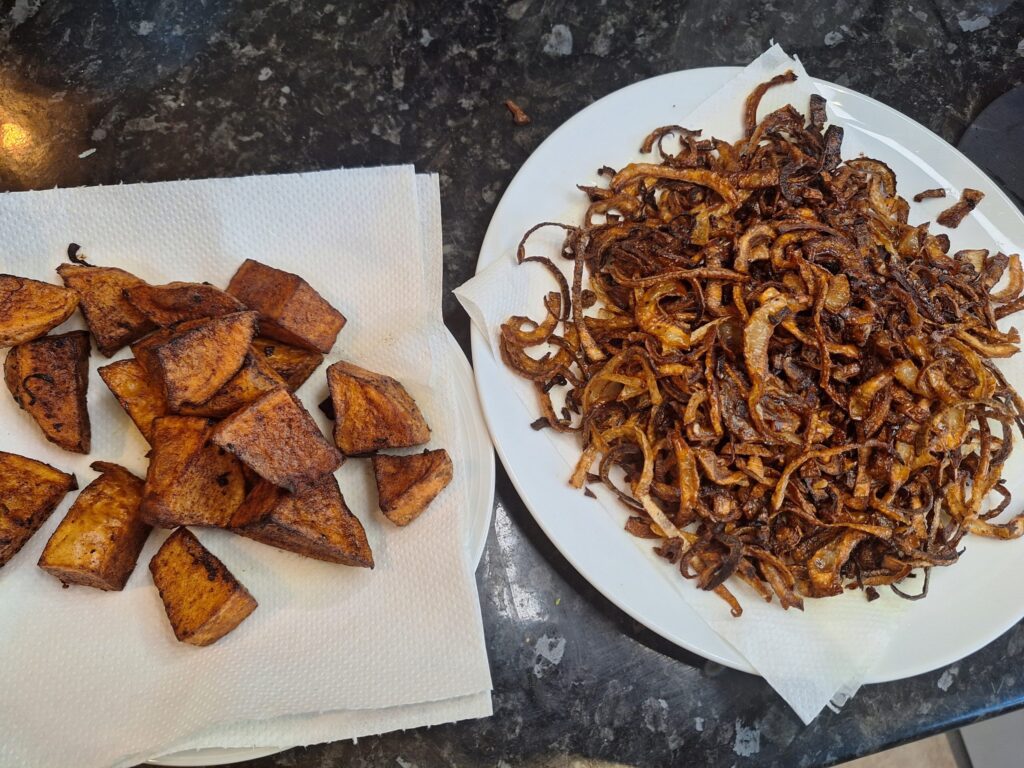
4. Add the ghee or oil to a pan on medium heat, , then add the masala spices and stir. Turn the heat to low and let the spices splutter for a minute.
5. Then add the chicken and turn the heat to medium and cover the pan with the lid. Cook for 2-3 minutes stir, then turn the heat to low, put the pan lid back on. Cook for another 7-8 minutes, until the chicken is browned.
6. Then add the half of the fried onions, stir through then add the tinned tomatoes, puree and green chillies. Stir through and cover with the pan lid. Let this cook for 15-20 minutes, until the chicken is thoroughly cooked through.
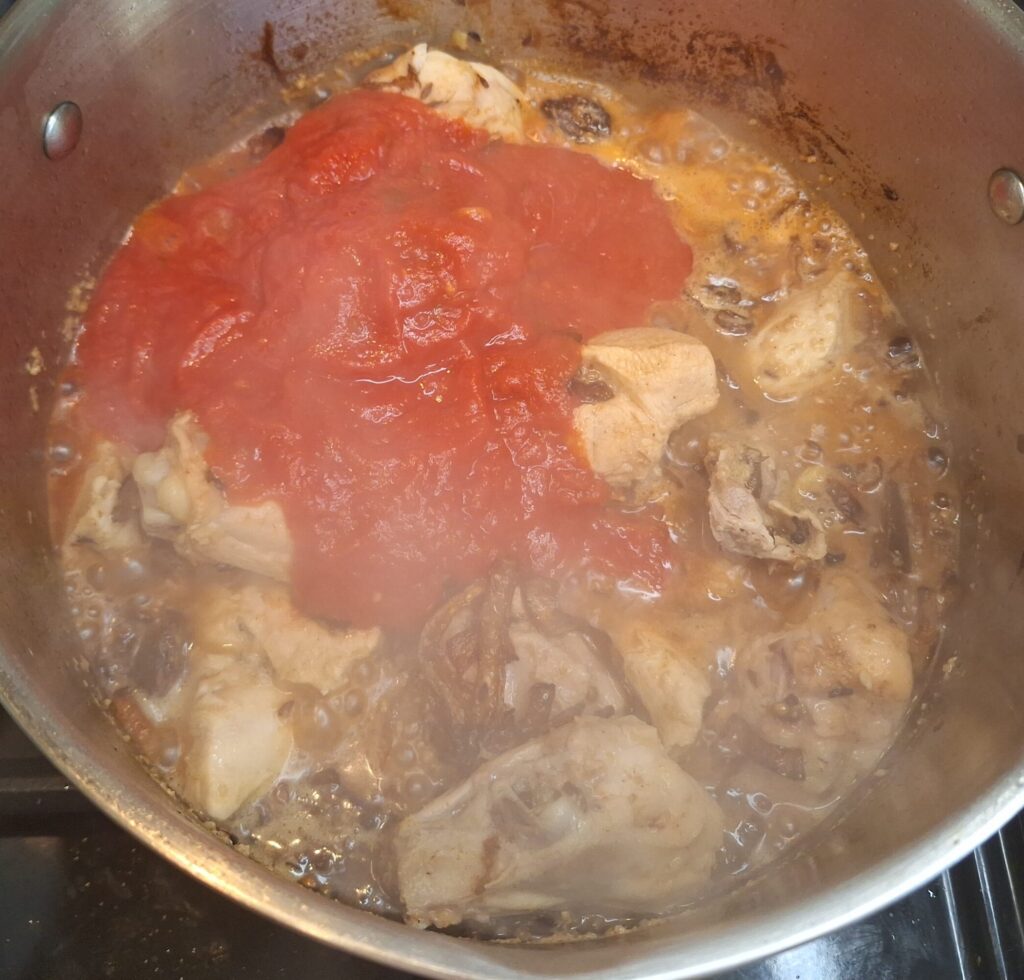
Keep stirring at regular intervals to check the chicken masala is not sticking to the pan. If it is, add very small splashes of water. You don’t want the masala to dry out too much, it needs to be saucy as it will cook further in the oven once combined with the rice.
7. Next add lemon juice, tamarind sauce and Worcester sauce. Again stir through. Then turn off the hob.
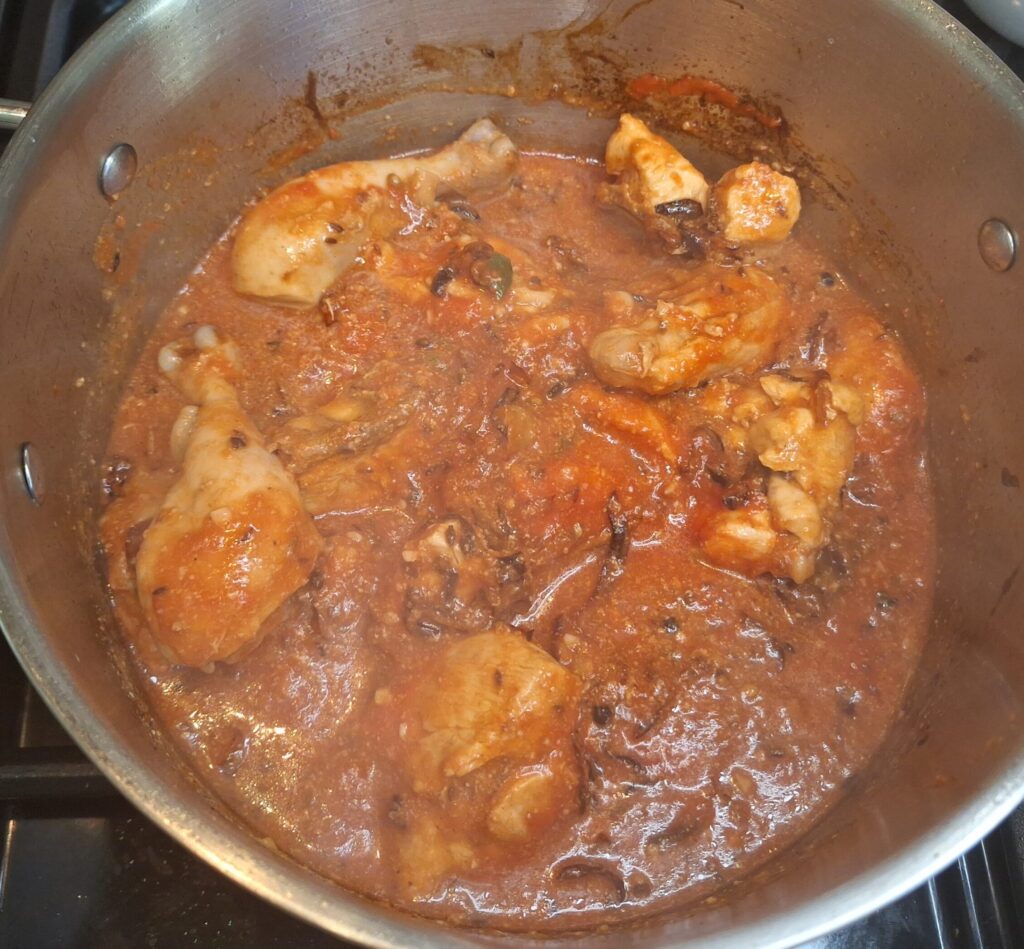
8. In a large saucepan, bring to boil enough water to cook the rice. Drain the soaked rice of the water and add the drained rice to the pan along with the salt and cumin seeds. Once the rice has cooked (this should take around 10 minutes), drain the water in a large sieve.
9. We next need to start layering the rice and the biryani masala. Add half of the rice back into the large saucepan and add two or three drops of yellow food colouring, spread gently with a fork. You don’t want all the rice to be yellow, a mix of yellow and white is perfect.
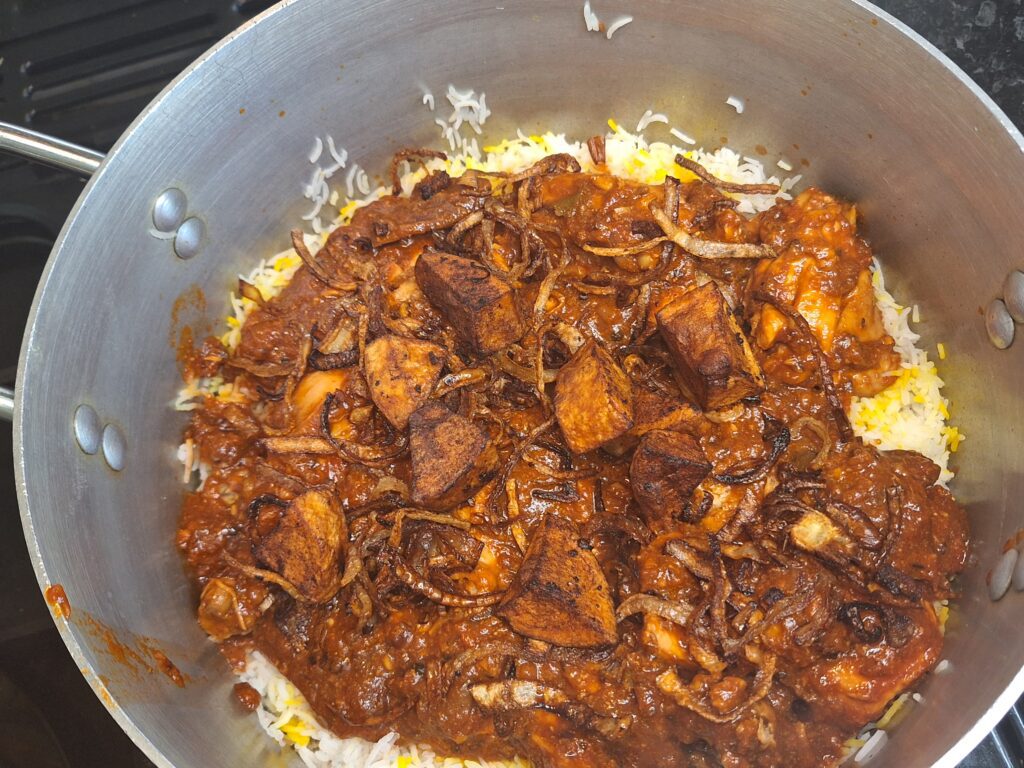
10. Next add all the chicken masala on top of the rice. Then add some of the remaining fried onions and some of the potatoes on top of the chicken. Spread it across the pan to make a full chicken masala, onion, potato layer.
11. Then add the remaining rice on top of the chicken, again add 2-3 drops of yellow food colouring on the rice and spread gently with the fork. Add the remaining fried onions and fried potatoes on top of the rice.
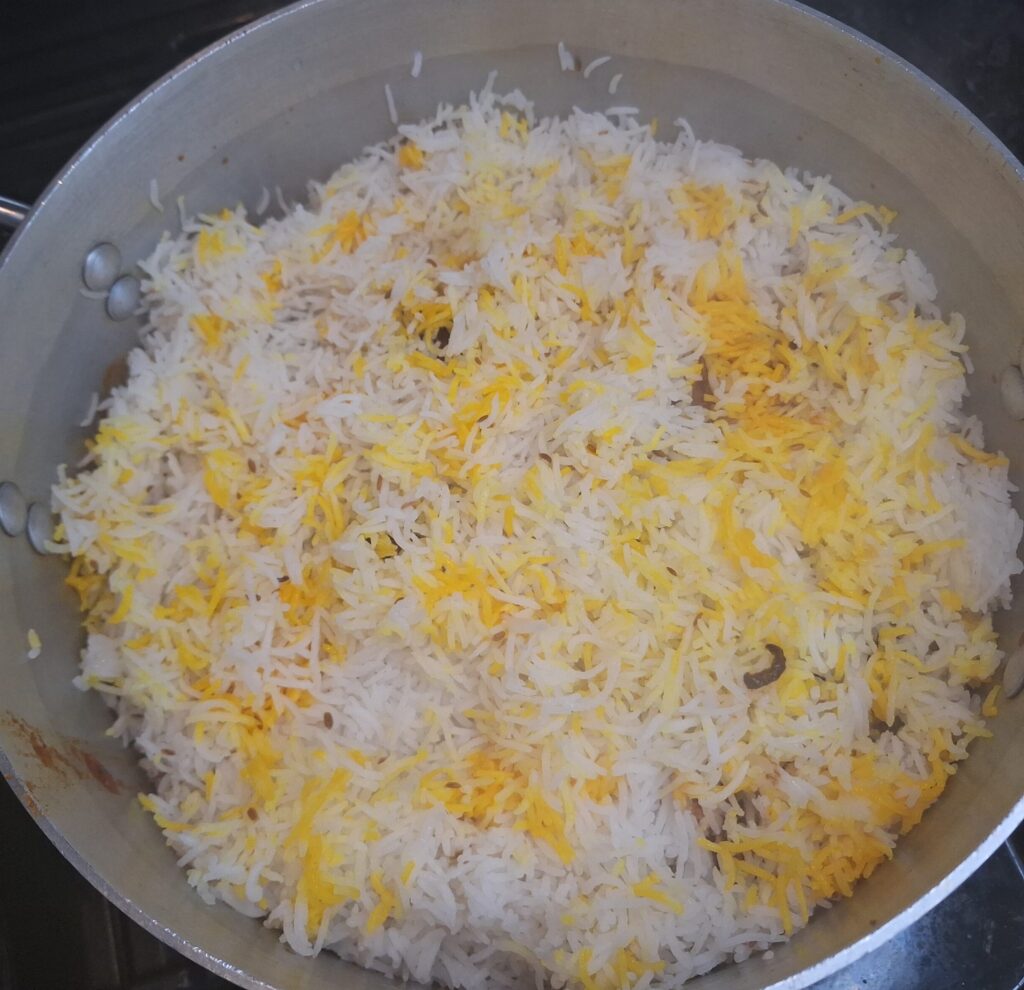
12. Then cover the saucepan with a lid and put in oven for steaming “dum” for 45 minutes on a low heat, around 80C (minimum 30 minutes), this really lets everything meld together and enhances the flavours.

13. Then serve immediately with boondi raita and enjoy!
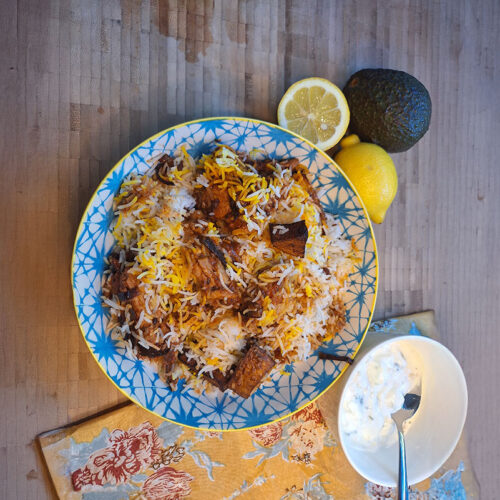
Chicken Biryani, a celebratory rice
Ingredients
Marinade for chicken biryani
- 1 whole chicken, skinned, cut into pieces(1kg)
- 9 tbsp natural yoghurt (900 grams)
- 1 tbsp garlic, finely chopped
- 1 tbsp ginger, finely chopped
- 0.5 tsp cumin seeds
- 0.5 tsp coriander seeds
- 1 tsp salt
- 1 cinnamon bark
- 1 black cardamom
Masala for chicken biryani
- 2 tbsp ghee or vegetable oil
- 0.5 tsp black peppercorns
- 1.5 tsp cumin seeds
- 2 bay leaves
- 2 black cardamoms
- 1 cinnamon bark
- 2 tsp coriander seeds
- 6 cloves
- 7 green cardamoms
- 1 tsp salt to taste
- 0.25 tsp red chilli powder
- 1 tin of chopped tomatoes
- 2 tbsp tomato puree
- 2 green finger chillies, finely chopped I add the tinned tomatoes, puree and green chillies in food processor to blend
- 1 litre vegetable oil
- juice of half a lemon
- 2 small potatoes, peeled and cut into quarters or small bitesize chunks
- 5 onions, finely sliced
- 100 ml tamarind sauce I like East End Tamarind Sauce
- 2 tbsp Worcester sauce
Rice for chicken biryani
- 1 tsp cumin seeds
- 1.5 tsp salt (to taste)
- 800 grams basmati rice (3 mugs) I like using Tilda Pure Basmati rice
- water 6-7 mugs enough to cook the rice
- yellow food colouring
Instructions
- Marinate the chicken with all the ingredients and leave in the fridge for at least 2 hours, ideally overnight.
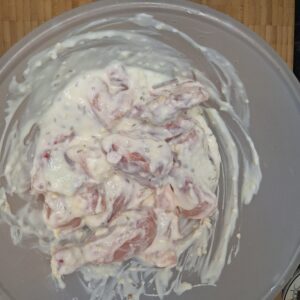
- Wash the rice and leave to soak in cold water (ideally for a minimum of two hours). Turn the oven on, and put on 50-60C heat.
- Heat the vegetable oil in a wok, once it is very hot, add the onions and potatoes and cook until golden brown. (Make sure the potatoes are properly cooked through, you do not want raw potatoes in the biryani.) Leave them to drain off on a plate covered with kitchen paper.
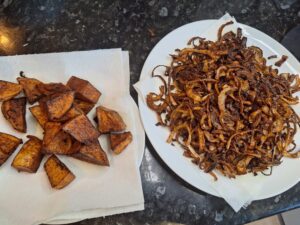
- Add the ghee or oil to a pan on medium heat, , then add the masala spices and stir. Turn the heat to low and let the spices splutter for a minute.
- Then add the chicken and turn the heat to medium and cover the pan with the lid. Cook for 2-3 minutes stir, then turn the heat to low, put the pan lid back on. Cook for another 7-8 minutes, until the chicken is browned.
- Then add the half of the fried onions, stir through then add the tinned tomatoes, puree and green chillies. Stir through and cover with the pan lid. Let this cook for 15-20 minutes, until the chicken is thoroughly cooked through.

- Keep stirring at regular intervals to check the chicken masala is not sticking to the pan. If it is, add very small splashes of water. You don't want the masala to dry out too much, it needs to be saucy as it will cook further in the oven once combined with the rice.
- Next add lemon juice, tamarind sauce and Worcester sauce. Again stir through. Then turn off the hob.
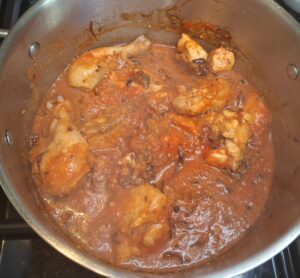
- In a large saucepan, bring to boil enough water to cook the rice. Drain the soaked rice of the water and add the drained rice to the pan along with the salt and cumin seeds. Once the rice has cooked (this should take around 10 minutes), drain the water in a large sieve.
- We next need to start layering the rice and the biryani masala. Add half of the rice back into the large saucepan and add two or three drops of yellow food colouring, spread gently with a fork. You don't want all the rice to be yellow, a mix of yellow and white is perfect.
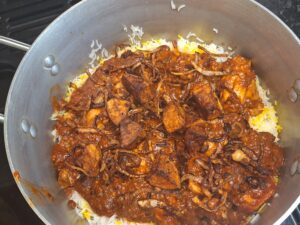
- Next add all the chicken masala on top of the rice. Then add some of the remaining fried onions and some of the potatoes on top of the chicken. Spread it across the pan to make a full chicken masala, onion, potato layer.
- Then add the remaining rice on top of the chicken, again add 2-3 drops of yellow food colouring on the rice and spread gently with the fork. Add the remaining fried onions and fried potatoes on top of the rice.
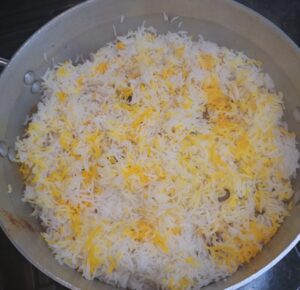
- Then cover the saucepan with a lid and put in oven for steaming "dum" for 45 minutes on a low heat, around 80C (minimum 30 minutes), this really lets everything meld together and enhances the flavours.
- Then serve immediately with boondi raita and enjoy!



